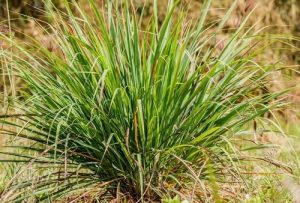Mosquitoes are not only irritating pests that can ruin outdoor activities. But they also pose health risks by transmitting diseases such as dengue, malaria, and Zika.
While there are numerous mosquito repellents in the market, some individuals prefer natural alternatives that are safe for themselves and the environment. Let’s explore 28 perennial plants that repel mosquitoes.
Do Mosquito-Repellent Plants Really Work?
The effectiveness of mosquito-repellent plants has been a topic of debate. While some people claim positive results, it’s important to understand that these plants may not provide complete protection against mosquitoes.
The scent of compounds emitted by these plants might deter mosquitoes to some extent. But they are unlikely to create a mosquito-free zone on their own.
It’s recommended to combine the use of mosquito-repellent plants with other preventive measures such as using mosquito nets, wearing protective clothing, and eliminating stagnant water sources.
Best Plants That Repel Mosquitoes and Flies
Let’s dive into the 28 best plants that repel mosquitoes and flies. The guide provides insight into their aroma, compounds present, USDA zone, and care requirements:
Citronella (Cymbopogon spp.)

Citronella is widely known for its mosquito-repellent properties. It emits a citrusy fragrance that mosquitoes find unpleasant. The two main compounds responsible for its effectiveness are citronellal and geraniol.
Citronella plants are tropical grasses that thrive in USDA zones 10-12. They require full sun and well-drained soil. Regular watering is necessary to keep the plants healthy and thriving.
Catnip (Nepeta cataria)
Catnip is a member of the mint family and contains a compound called nepetalactone, which is a strong mosquito repellent. The aroma of catnip is minty and herbaceous.
It grows well in USDA zones 3-9 and prefers full sun to partial shade. Catnip requires well-drained soil and regular watering to maintain its growth and mosquito-repellent properties.
Marigold (Tagetes spp.)
Marigolds have beautiful, vibrant flowers and produce a pungent scent that repels mosquitoes. The compound responsible for its mosquito-repellent properties is pyrethrum.
Marigolds are adaptable plants that can thrive in USDA zones 2-11. They prefer full sun and well-drained soil. Regular watering is necessary to promote healthy growth and continuous mosquito-repelling benefits.
Lavender (Lavandula spp.)
Lavender is widely appreciated for its soothing aroma, but it also acts as a natural mosquito repellent. The main compounds found in lavender, such as linalool and linalyl acetate, have mosquito-repelling properties.
Lavender plants thrive in USDA zones 5-9 and require full sun, well-drained soil, and occasional watering. They can be grown in gardens, containers, or as ornamental plants.
Basil (Ocimum basilicum)
Basil is not only a popular culinary herb but also an effective mosquito repellent. It contains compounds like eugenol and citronellol, which mosquitoes dislike.
Basil grows well in USDA zones 4-11 and requires full sun, well-drained soil, and regular watering. It can be grown in gardens, pots, or as companion plants to ward off mosquitoes.
Lemon balm (Melissa officinalis)
Lemon balm, also known as Melissa, emits a lemony and minty fragrance that repels mosquitoes. The primary compound responsible for its mosquito-repellent properties is citronellal.
Lemon balm thrives in USDA zones 4-9 and prefers partial shade to full sun. It requires moist soil and regular watering to maintain its growth and mosquito-repellent effectiveness.
Peppermint (Mentha x piperita)
Peppermint is a refreshing herb with a strong minty aroma that mosquitoes find unpleasant. It contains menthol and limonene, which act as natural mosquito repellents.
Peppermint grows well in USDA zones 3-11 and prefers full sun to partial shade. It requires moist soil and regular watering to thrive and provide effective mosquito protection.
Rosemary (Rosmarinus officinalis)
Rosemary is a versatile herb known for its woody, herbal fragrance. It contains compounds like rosmarinic acid and camphor, which repel mosquitoes.
Rosemary thrives in USDA zones 7-10 and requires full sun, well-drained soil, and moderate watering. It can be grown in gardens or as potted plants to deter mosquitoes.
Lemongrass (Cymbopogon citratus)
Lemongrass emits a strong citrusy and lemony scent that mosquitoes dislike. It contains citronellal and geraniol, which have mosquito-repellent properties.
Lemongrass is best grown in USDA zones 10-11 and requires full sun, well-drained soil, and regular watering. It can be grown in gardens, pots, or as ornamental plants to repel mosquitoes.
Geranium (Pelargonium spp.)
Geraniums have beautiful, colorful flowers and emit a floral and rosy scent. Certain geranium species with citronella-like fragrances contain compounds like geraniol and citronellol that repel mosquitoes.
Geraniums thrive in USDA zones 10-11 and require full sun to partial shade. They prefer well-drained soil and can be grown in gardens, containers, or as hanging plants to deter mosquitoes.
Conclusion
While hanging plants that keep mosquitoes away can provide some level of protection against mosquitoes, it’s important to manage our expectations. These plants should be viewed as one component of a comprehensive mosquito control strategy that includes other preventive measures.
Incorporating mosquito-repellent plants indoors can help reduce mosquito populations and enhance your outdoor comfort. Remember to consider the specific USDA zone, care requirements, and aroma preferences when selecting plants for your mosquito-repellent garden.
People Who Read This Also Read:






